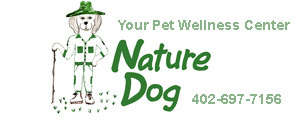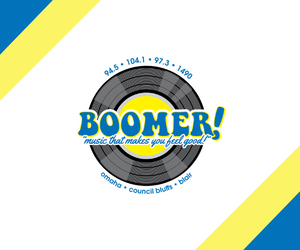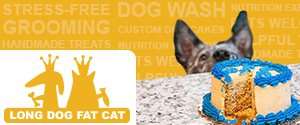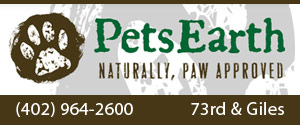- Do you subscribe to Dharma Dog Training’s Newsletter? You should.
- A Unique Campaign from The Humane Society of the United States
- Rabid bats in Omaha- Stay safe, prepared with these tips
- Springtime Activities in Omaha
- Mill Dog Monthly from Bailing Out Benji
- World Spay Day, Legislative Alert in Nebraska
- Attend the Nebraska Rescue Council’s monthly meeting this Saturday
- Five Hard-to-Ignore Reasons to Adopt!
- Paws in Pink to Benefit Breast Cancer Foundation
- VCA, Inc. Acquires MidWest Vet Specialists from Kansas State University
How to Clean Dog Teeth

If your dog’s breath smells, this could be a sign of dental problems or the need to have his teeth cleaned by your vet. There are many ways to keep on top of your dog’s dental health in between visits: you can use chew toys, dental bones or treats, tooth wipes, and dog-specific toothpaste and toothbrushes.
If your dog is an older dog or a small dog breed like a Chihuahua or a Dachshund, your friend may need more regular dental cleaning.
By taking some preventative measures to keep your dog’s teeth relatively clean, you can save a hefty sum of money compared with the cost of treating tooth-related disease (not to mention the discomfort for your dog). Many dogs show signs of some form of tooth decay by the age of three.
You’ll want to be able to fend off plaque before it becomes tartar (which can take as little as 24 hours). It is worth it to know how to clean your dog’s teeth best.
Get the right gear
You’ll want to use a toothbrush designed specifically for dogs. If you can’t find any available near you, you can make do with a child’s toothbrush.
Although you could use a child’s toothbrush, you must use toothpaste made specifically for dogs. Human toothpaste – and this includes home remedies such as baking soda and salt – are not suitable for dogs and can be harmful.
The benefit of doggie toothpaste is that the flavoring is much more to their liking, as it tends to be chicken or another dog-friendly taste.
How to clean your dog’s teeth step by step
- Begin by making both you and your dog comfortable. You can do this on your bed or the sofa – if you have a dog ramp for bed, your friend can climb right up and join you comfortably. Kneel or sit next to your dog’s head. Don’t restrain your friend, as you want him to be happy and trusting during tooth cleaning.
- If your dog is new to tooth brushing, begin by applying gentle pressure with your finger along your dog’s gum line and teeth. This will help your friend get used to having his mouth and teeth touched. If your dog is resistant, do a little bit of this to warm him up, and then do it again another day. Better to go slowly over multiple sessions so that your dog gets used to the process rather than have him get upset.
- Now let your dog taste the toothpaste. You might want to have different flavors on hand to see which one he likes best.
- To start brushing, put the toothbrush at an angle (45 degrees) of the gum line. Rather than having the toothbrush right against the teeth, this position near the gum line is best for clearing plaque. With gentle, circular motions, move the brush across all of the top and bottom teeth, being gentle and reassuring throughout.
- Finish with treats and praise for your friend!
Note: If you notice any bleeding, make sure it isn’t severe. A bit of bleeding is normal, but if any major bleeding occurs, contact your vet as soon as possible. Severe bleeding might be a sign your dog is developing periodontitis (gum disease).
For best results, aim to brush your dog’s teeth every few days, or at the very least, once a week.
Some alternatives to the toothbrush
If your dog really doesn’t tolerate having his teeth brushed, some alternatives are not quite as effective but are still better than nothing.
Tooth wipes
Tooth wipes are premoistened wipes that you can use daily to wipe the surface of your dog’s teeth. These wipes have a specific texture that is for dog’s teeth so that you can clean them without damaging their gums. Tooth wipes are quick and easy to use, and you don’t need to rinse your dog’s mouth afterward.
Dental treats
Dental treats are an alternative that you can use instead of other kinds of doggie treats. Some kinds of dental treats can reduce plaque by as much as 70% – these treats are coated with polyphosphate, so check the label. Also, check that the treats have the Veterinary Oral Health Council (VOHL) seal of approval.
Be sure not to give too many dental treats, though, as you don’t want your dog to develop a weight problem.
Chew toys and bones
Giving your dog a chew toy or bone to gnaw on can reduce plaque buildup in his teeth. Check with your vet for the best brand for your dog.
You will still need to have your dog’s teeth brushed regularly, as chewing bones and toys don’t help remove plaque beneath the gum line.
Latest News
-
How to Make Your Rescue Pet as Comfortable as Possible
Did you bring home a new pet from a shelter...
- Posted 2 weeks ago
- 0
-
How Having A Pet Can Change Your Life
Having a pet can open your heart in ways that...
- Posted 6 months ago
- 0
-
How To Improve The Life Of Your Senior Pet
Do you have an elderly fur baby and want to...
- Posted 6 months ago
- 0
-
Springtime Activities To Enjoy With Your Furry Friends
Are you preparing for warmer weather and want some ideas...
- Posted 7 months ago
- 0
-
Pros And Cons Of Microchipping Your Pets
Have you considered whether your pets should be microchipped and...
- Posted 8 months ago
- 0
-
The Best New Fun Toys For Dogs And Cats
The Best New Fun Toys For Dogs And Cats Did...
- Posted 8 months ago
- 0
-
Heartfelt Ways To Show Your Pet You Love Them
Did you know there are more ways to show your...
- Posted 9 months ago
- 0

















You must be logged in to post a comment Login